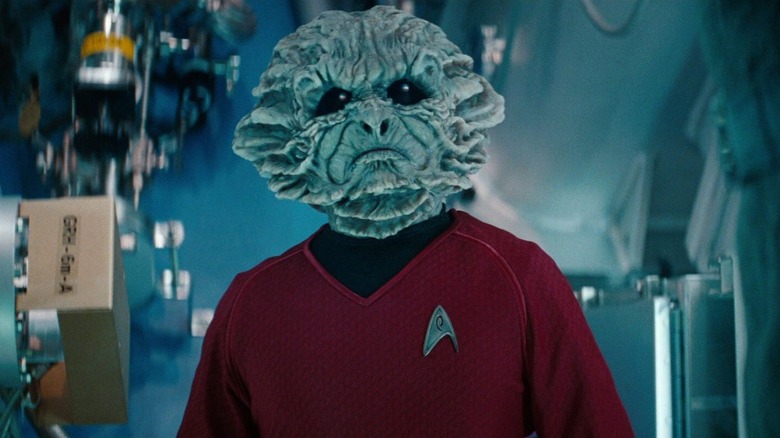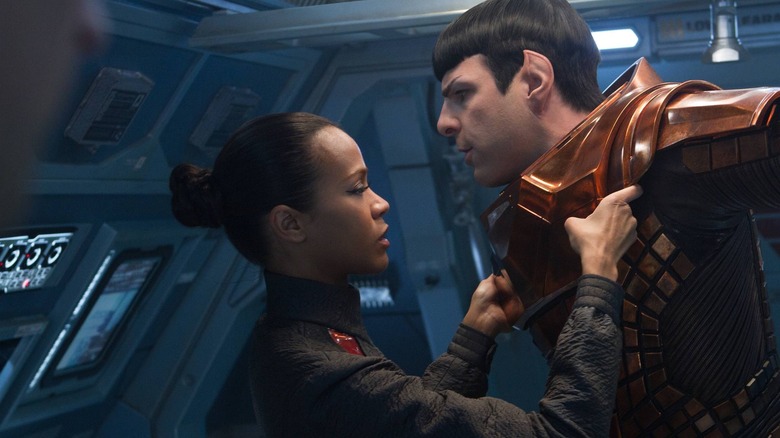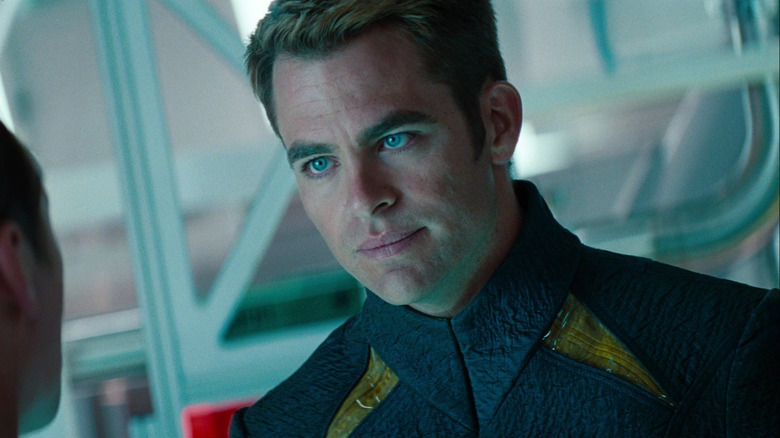Netflix Users Only Have One Week Left To Watch These Star Trek Titles
According to Whats-On-Netflix.com, 2009's "Star Trek" and 2012's "Star Trek Into Darkness" are going to be removed from Netflix in October of 2023. Their removal indicates that an era is over.
The handlers of "Star Trek" have, ever since the late 1960s, been very good about letting the shows remain available. Even before home video, "Star Trek" was put into seemingly eternal syndication, able to be enjoyed pretty much in perpetuity. Older Trekkies may also recall the Columbia House VHS days, when eager Trekkies could subscribe to a mail-in service that would deliver cassettes — containing two episodes apiece — directly to their doors. Eventually, "Star Trek" would be released in season-by-season DVD box sets, followed by massive proliferation across many major streaming services. Ultra-crunchy Blu-rays also eventually crept into the marketplace.
A lot of Trek's widespread availability stems from Janet Jackson's infamous wardrobe malfunction during Super Bowl XXXVIII in 2004. The scandal was broadcast on CBS, then overseen by Les Moonves, and the show was produced by MTV, then overseen by Tom Freston. The scandal prompted Viacom head Sumner Redstone to split up his company into two factions, one run by Moonves and the other run by Freston. The split, however, divided Paramount and CBS, which was a bugaboo for Trekkies. Paramount, you see, held the rights to "Star Trek" feature films, while CBS held the franchise's TV rights. That means if Paramount wanted to make a new "Star Trek" movie, it had to license the likeness rights from CBS, even though it was technically within the same company. Any new Trek movies would also have to be legally distinct from the original product so as not to infringe on any copyrights.
Hence, the creation of the Kelvin timeline.
Schisms
Yes, it seems that the creation of a new timeline for the "Star Trek" feature film released in 2009 was wrought more from legal necessity than creative impulse. The makers of the 2009 "Star Trek" were allowed to use the names and the iconography of old-world "Star Trek," but — rumor had it — that it had to be at least 20% different. Recasting old characters, dressing them in altered uniforms, and changing the look of the U.S.S. Enterprise, then, were done to mark that percentage. Director J.J. Abrams, openly not a Trekkie, made a raucous and action-packed sci-fi adventure picture that was very, very far from the cerebral, diplomatic spirit of "Star Trek" at its height.
Because "Star Trek" was so broadly appealing in a "space battle" sort of way — and because we hadn't had a "Star Wars" picture since 2005 — it became a massive hit, and Abrams returned in 2012 with "Star Trek Into Darkness," an updated, violent retread of "Star Trek II: The Wrath of Khan." That, too, was a hit, although didn't quite rattle the zeitgeist in the same way. By the time "Star Trek Beyond" came out in 2016, "Star Wars" had returned, and audiences no longer needed "Star Trek" to serve as their light-beer substitute.
While Paramount was making their action-packed films, CBS took advantage of the Viacom schism to push old "Star Trek" reruns onto every streaming platform imaginable. There was a moment when streaming was just becoming "a thing" that no service was seemingly without every "Star Trek" series. Netflix had Trek. Everyone had Trek. Re-watch marathons became popular. Under this model, even the movies became nimble, and Abrams' films started to spread as well.
Unification
Paramount and CBS, however, reunited in 2019. CBS had launched CBS All Access back in 2017, and began to produce new "Star Trek" shows for the first time since 2005. When Viacom re-merged, the service changed its name to Paramount+, and any notions of which TV shows counted as "canon" could be laid to rest. The merger was an organic excuse to put all Trek under one umbrella ... and to no longer share them with everyone.
It seems that Paramount+, now wanting to be the only home for all things "Star Trek," is gathering everything back around itself. All the new shows, all the old shows, and all the movies will now live in the same house. This means the era of finding "Star Trek" just about anywhere is not comfortably drawing to a close. It's a pity, really. A big reason why "Star Trek" has persisted in the popular consciousness is because it's always been widely available. New generations are watching the shows all the time, and feisty Zoomers can be found, to this very day, giving social media play-by-plays of, say, "Star Trek: Voyager."
While having every "Star Trek" series and movie on the same service seems cleaner, it feels like a contraction. As we have learned from capricious studio execs, not everything on a single streaming will remain there indefinitely. "Star Trek: Prodigy," for instance, has been removed from Paramount+, and there is no word yet as to where or when it will re-emerge. Perhaps it will behoove fans to check out the 2009 "Star Trek" and "Into Darkness" before they leave Netflix.


